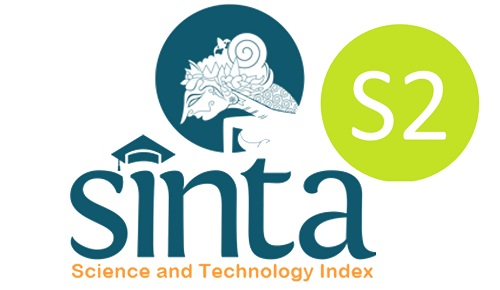USING PREZI PRESENTATION AS INSTRUCTIONAL MATERIAL IN ENGLISH GRAMMAR CLASSROOM
DOI:
https://doi.org/10.22373/ej.v3i2.995Keywords:
Audio-Visual Aid, Multimedia Technology, Web 2.0 tools, Prezi Presentation, Teaching Grammar, Aesthetic, Instructional designAbstract
Utilizing digital technology as a medium for educational instruction has now become one of the 21 century pedagogy trends. Numerous researches suggested that using digital technology provides positive impacts as it gives more access to resources for the learning. In Foreign language pedagogy, using digital technology fosters learners’ autonomy by self-managing the amount of learning inputs outside the classroom. However, many studies emphasize more on the communicative and the vast resources accessible for the learners. Very limited attention given to the impact of the visual aid that focuses on aesthetic values of instructional design. English Grammar is one of many subjects that often received complaints by learners and claimed as a “boring†subject. Many English teachers especially in developing countries still utilize traditional method in teaching grammar. They introduce sentence structure using grammar formulas. Although, this method is still very popular, it often considered monotonous by many learners. This paper discusses about the study of using Prezi.com presentation to deliver grammar instruction materials in an English language classroom. From the study, it was found that the majority of the students involved in the study are fond of the materials and the post-test results showed grammar mastery improvement after receiving a grammar lesson that shows instructional materials using prezi. On the other hand, the control class that uses only writing boards and worksheets showed less improvement. This research provides new technique in developing grammar instruction design using a web tool called Prezi in enhancing the display of the instruction material. The experiment was given to students of English Language Education. The result of the study shows students’ positive perception toward the use of Prezi in English grammar instructional material.Downloads
References
Al Mamun, MD. Abdullah. (2014). Effectiveness of Audio-visual Aids in Language Teaching in Tertiary Level. Dhaka: BRAC University.
Altun, M. (2015). The Integration of Technology Into Foreign Language Teaching. International Journal on New Trends in Education and Their Implications, 6(1), 22-27. Retrieved from http:// www.ijonte.org /FileUpload/ ks63207/File/03a.altun.pdf
Chang, K.-E., Sung, Y.-T., & Hou, H.-T. (2006). Web-based Tools for Designing and Developing Teaching Materials for Integration of Information Technology into Instruction. Educational Technology & Society, 9(4), 139-149. Retrieved From http://ifets.info/journals/9_4/12.pdf.
Gilakjani, A. P. & Leong, L. (2012). EFL Teachers’ Attitudes toward Using Computer Technology in English Language Teaching. Academy Publisher. 2(3), 630-636. doi:10.4304/tpls.2.3.630-636.
Jimaima, H. (2014). The syntax, semantics and pragmatics of conditional clauses in tonga and english: a comparative analysis. Lusaka: University of Zambia.
Meyers, K. (2012). Prezi: A Dynamic Presentation or Nauseating Experience?. Retrieved from https://www.insidehighered.com /blogs/gradhacker /prezi-dynamic-presentation-or-nauseating-experience.
Parrish, P. E. (2007). Aesthetic principles for instructional design. Educational Technology Research and Development, 57(4), 511-528. doi:10.1007/s11423-007-9060-7
Prichard, T. (2009, September 11). Placebo effects in educational technology effectiveness? Retrieved February 01, 2014, from https://www.clarity-innovations.com/blog/tprichard/placebo-effects-educational-technology-effectiveness
Shamoail, E. (2005). Teachers’ Perceptions and Experiences in Adopting “Blackboard†Computer Program in a Victorian Secondary School: A Case Study. (Unpublished Doctoral Dissertation). Victoria University, Melbourne, Victoria, Australia.
Shyamlee S.D. & Phil, M.(2012). The Use of Technology in English Language Teaching and Learningâ€: An Analysis. International Conference on Language, Medias and Culture IPEDR, IACSIT Press, 33, 150-156. Retrieved from http://www.ipedr.com/vol33/030-ICLMC2012-L10042 .pdf.
Downloads
Published
Issue
Section
License
Proposed Policy for Journals That Offer Open Access
Authors who publish with Englisia journal agree to the following terms:
- Authors retain copyright and grant the journal right of first publication with the work simultaneously licensed under a Creative Commons Attribution License that allows others to share the work with an acknowledgement of the work's authorship and initial publication in this journal.
- Authors are able to enter into separate, additional contractual arrangements for the non-exclusive distribution of the journal's published version of the work (e.g., post it to an institutional repository or publish it in a book), with an acknowledgement of its initial publication in this journal.
- Authors are permitted and encouraged to post their work online (e.g., in institutional repositories or on their website) prior to and during the submission process, as it can lead to productive exchanges, as well as earlier and greater citation of published work (See The Effect of Open Access).









